Attending an Apple event in person conjures up imagery not unlike when Charlie Bucket visited Willy Wonka’s fabled chocolate factory. Impeccably and professionally produced, but minus the Oompa Loompas, the event had no earth-shattering announcements.
However, Apple did its best to keep its iPhone and Watch relevant and compelling, which is no easy task in a sluggish smartphone market.
New iPhone 15 and 15 Pro Models
During its September keynote speech on Tuesday, dubbed “Wonderlust,” Apple introduced the new iPhone 15 lineup and other significant changes.
With the iPhone 15, the company confirmed industry speculation that it would convert from its Lightning charging connector to USB-C. Also unveiled were the redesigned Apple Watch Series 9 and Ultra 2 smartwatches, which include new colors and functions.
The USB-C announcement this year is the most significant change to the iPhone’s design in 11 years, even though the annual iPhone event has grown somewhat mechanical over the years, frequently with minor adjustments to battery life, camera systems, and screens. This long-awaited modification simplifies the charging procedure for various manufacturers and devices that were standardized years ago on USB-C.
Inside the Steve Jobs Theater, that announcement got an anticlimactic round of applause, presumably because business travelers in attendance knew this would ultimately make their accessories bag a lot lighter and simpler from a cable management standpoint.
The iPhone 15 Pro and iPhone 15 Pro Max will feature four new finishes: black titanium, white titanium, blue titanium, and natural titanium.
Like much of the technology industry, Apple faces a challenging revenue environment. Apple’s sales decreased for the third consecutive fiscal quarter, which ended in July. Due to fewer device updates, iPhone revenue for the quarter came in at $39.7 billion, representing a 2% year-over-year reduction.
Apple announced that it won’t hike pricing for the iPhone 15 series, which should encourage people to upgrade even more. Given the inflationary environment the world continues to operate in, the company should be applauded for resisting the temptation to increase prices.
When Apple announces new high-end smartphone models, it likes to add new functionality to its baseline phones. The company unveiled the next-generation entry-level iPhone 15, which does away with the notch in favor of an extended “Dynamic Island” utility that delivers alerts, notifications, and other worthwhile functions.
iPhone 15 features the Dynamic Island which fluidly expands and adapts to a user’s alerts and Live Activities. (Video Credit: Apple)
Apple Doubles Down on Computational Photography
Until recently, the iPhone 14 Pro was the only device with enhanced image stabilization for taking photographs and videos, 2x telephoto support, and enhanced portraits with richer color and better low-light performance — all included in the entry-level iPhone 15 phones.
The Pro models include even more sophisticated camera improvements, such as a 48MP primary camera with a sensor larger than that of the iPhone 15.
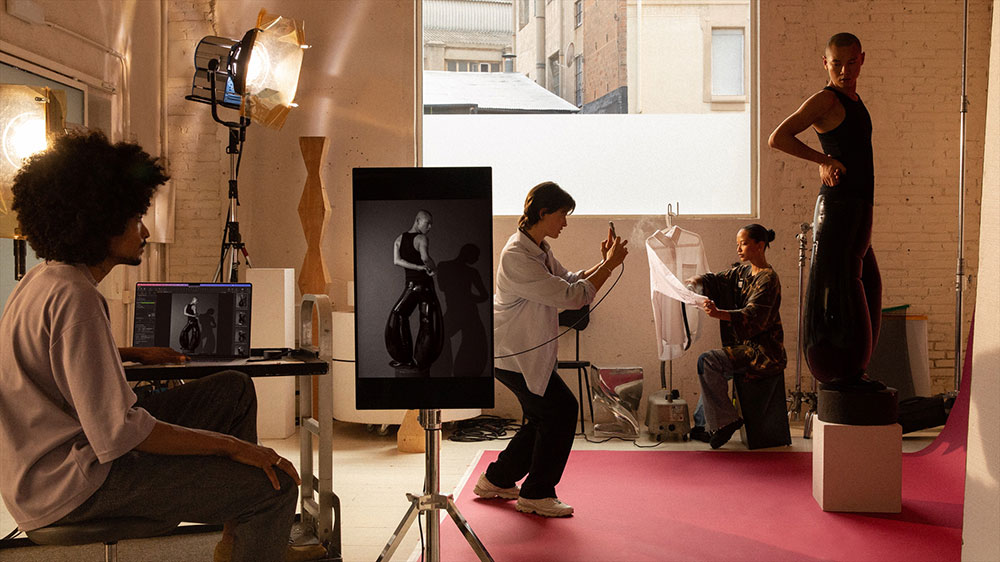
The iPhone 15 Pro lineup enables workflows for photographers and filmmakers that previously were not possible. Now, with Capture One, users can shoot on an iPhone and instantly transfer 48MP ProRAW directly to a Mac. (Image Credit: Apple)
According to Apple, the iPhone 15 includes the same A16 Bionic processor as the iPhone 14 Pro, which has a neural engine for handling more complex tasks, including on-device live voicemail transcriptions, a capability that will become available when iOS 17 is released.
The iPhone 15 is equipped with an enhanced ultra-wideband (UWB) chip that connects with neighboring devices, making it easier to locate people (with better precision) who broadcast their location in congested places.
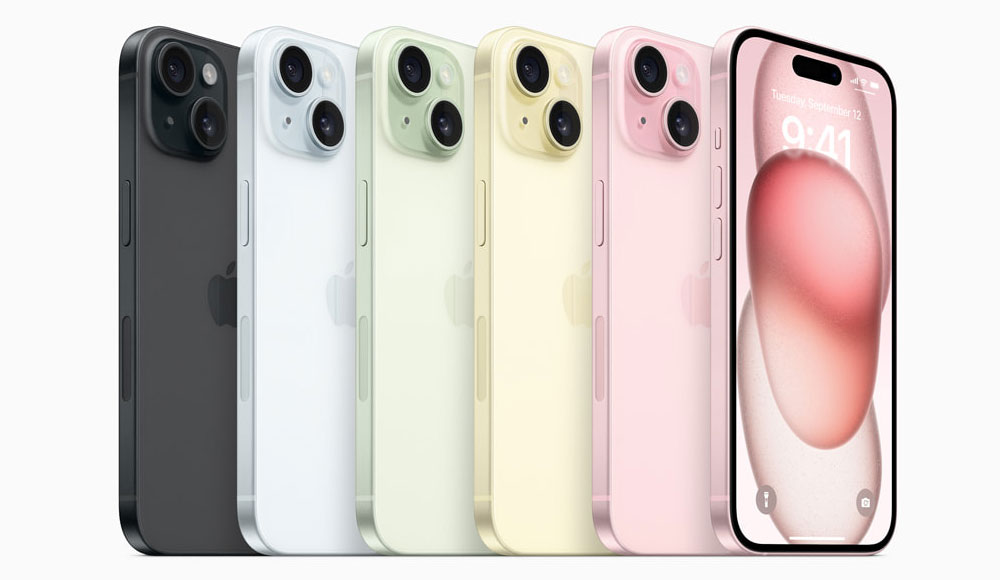
The iPhone 15 is available in two sizes and five colors: black, blue, pink, green, and yellow. The iPhone 15 has a 6.1-inch screen, while the iPhone 15 Pro has a 6.7-inch screen. (Image Credit: Apple)
The iPhone 15 and iPhone 15 Pro have starting prices of $799 and $999, respectively. Pre-orders for the iPhone 15 variants begin on Friday, and the devices will go on sale in stores on Sept. 22.
USB-C Comes to the iPhone, Finally!
The switch to a USB-C charging cable for the new iPhone 15 models, which ends an 11-year run with Apple’s exclusive Lightning charging connector, is arguably the most significant shift.
Though Apple has been getting pushed by the European Union for the past several years to make this change, this move will dramatically simplify the challenge of finding the correct charger for each gadget because they can now power their Mac computers, iPhones, and iPads with the same USB-C chargers.
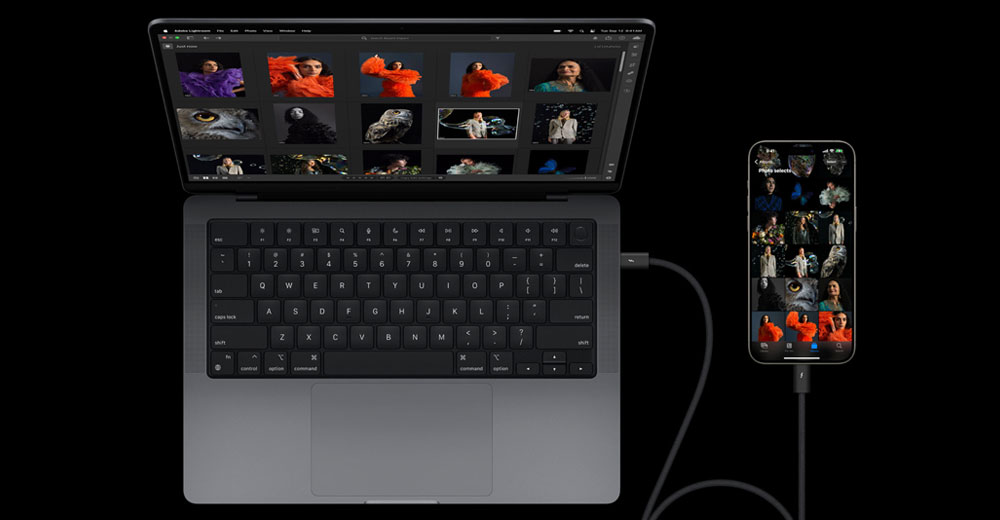
The new USB-C connector on the iPhone 15 Pro and iPhone 15 Pro Max supports USB 3 for data transfer speeds up to 10GB per second, up to 20x faster than USB 2. (Image Credit: Apple)
One can only imagine how many millions of obsolete Lightning cables will find their way into landfills over the next year or so.
Equally important, a dedicated USB-C controller in the iPhone 15 Pro will enable up to 20 times quicker transfer rates than USB-2 technology. That’s a bigger deal than Apple made it out to be during the announcement, as transferring large (especially video) files via a Lightning cable can seemingly take forever.
Apple Watch Series 9 Iterative Release
The new Apple Watch Series 9 unveiled at the event has the company’s upgraded silicon chip and improved ultrawideband connectivity.
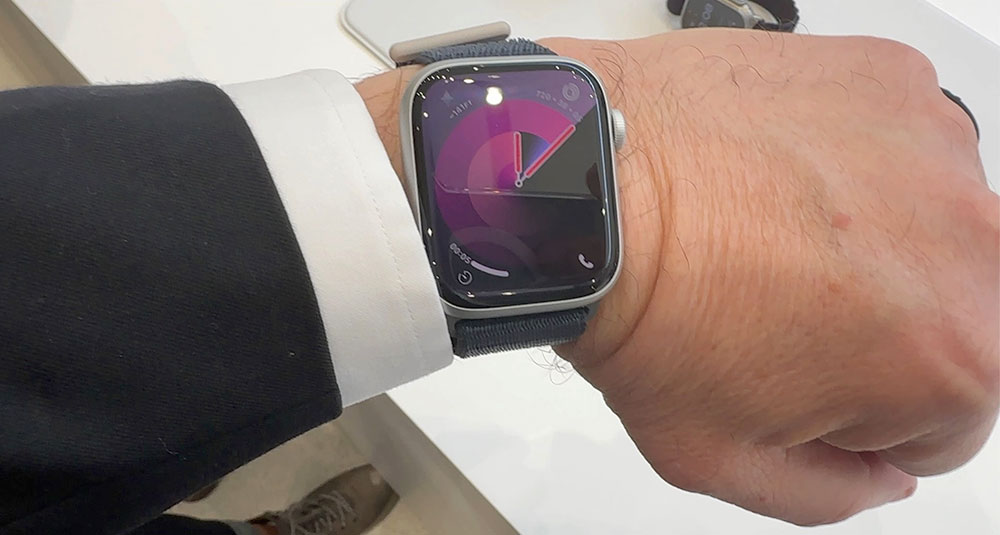
Sept. 12, 2023 — The Watch Series 9 is unveiled at the Apple Wonderlust event in the Steve Jobs Theater at Apple Park in Cupertino, Calif. (Photo by Author)
With the latest Apple Watch, users can voice-log health data, share contact information by touching another Apple Watch, and automatically brighten the display by raising their wrist. Colors for the Series 9 include pink, navy, red, gold, silver, and graphite.
Apple also debuted the revised S9 dual-core processor and a new UWB chip in its “rugged” Ultra smartwatch line’s second edition. Additionally, it has additional data on the display for more thorough tracking.
The Series 9 Apple Watch is priced at $399 and the Ultra at $799; both will be available on Sept. 22.
According to Apple, users can answer or finish phone calls, play and pause music, and snooze alarms by double-tapping their index and thumb on the Watch Series 9’s new “double tap” gesture control. Like spinning the digital crown, the hand gesture can also browse through widgets.
According to the company, an improved neural engine that processes sensor data and machine learning makes double tap possible. The feature will be accessible beginning next month.
The Vision Pro mixed reality headset, expected in early 2024, will be controlled by a similar hand tap.
Apple’s Obsession With Sustainability
Apple’s Watch Series 9 will be the company’s “first-ever carbon-neutral product,” according to Lisa Jackson, vice president of environment, policy, and social initiatives, citing efforts to lessen its carbon footprint and offset emissions via carbon buybacks validated by a third party.
In line with Apple’s ongoing sustainability efforts, Jackson stated that the company will cease using leather in future accessories, including watch bands. Apple will transition to a new fabric called FineWoven, which is composed of 68% post-consumer recycled material and boasts a significantly lower carbon footprint than leather.
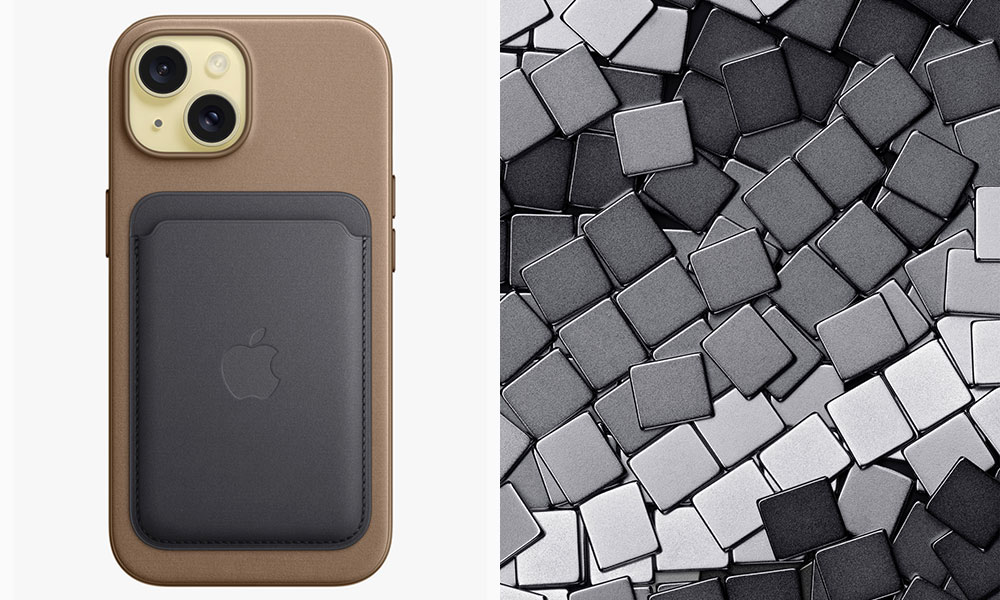
Apple is replacing leather across all of its product lines and introducing FineWoven. This includes the new FineWoven Case with MagSafe and FineWoven Wallet with MagSafe for the iPhone 15 lineup — and new Apple Watch bands. Both the new iPhone 15 and the Apple Watch lineups advance progress toward 2025 targets for the use of 100% recycled metals in key components, including 100% recycled rare earth magnets and the company’s first use of 100% recycled cobalt in the battery of iPhone 15, Apple Watch Series 9, and Apple Watch Ultra 2. (Images Credit: Apple)
Final Thoughts
Those individuals anticipating new iPads, Macs, or MacBooks were disappointed as no new models were released. There had been speculation that Apple would release a new “M3” processor, but presumably, Apple will wait until later this year to make those announcements.
In addition, Apple did not reveal new AirPods (or the aging AirPods Max), unlike what some had portended. However, Apple did announce that it would be releasing an earlier model of the AirPods Pro second generation with a USB-C charging connector.
Two features among the new announcements caught my attention: Double Tap and the Action Button. Double Tap was especially compelling as it adds convenience via a simple gesture when using an iPhone and Watch in tandem, like taking a group photo or answering or ending a call, as demonstrated in this video from the event:
The new Action Button also has some real potential as a feature that will catch people’s attention. In typical Apple fashion, the company has done a terrific job around discoverability and usability, allowing users to quickly use this button for a variety of different functions, like taking snapshots, turning on the iPhone’s light, recording a voice memo, or creating a short cut for other tasks.
Taken all together, Apple’s refresh will likely solidify the company’s leadership position in the high-end smartphone segments.
The camera feature upgrades in the Pro models, particularly the 5X zoom capability, will continue to advance the computational photography aspect of the modern smartphone. Apple also added spatial video capture to its Pro models, something that will be especially important when Vision Pro is released so users can view 3D user-generated content out of the gate.
In a very tough smartphone market, give Apple credit for continuing to develop several attention-grabbing ways to keep the iPhone lineup compelling and persuasive. At the very least, these new announcements will help keep most Apple users in its ecosystem that might otherwise be tempted by “bright, shiny new objects” like foldable phones.
It will be interesting to see how users respond to these new Apple products in these economically challenged times.

